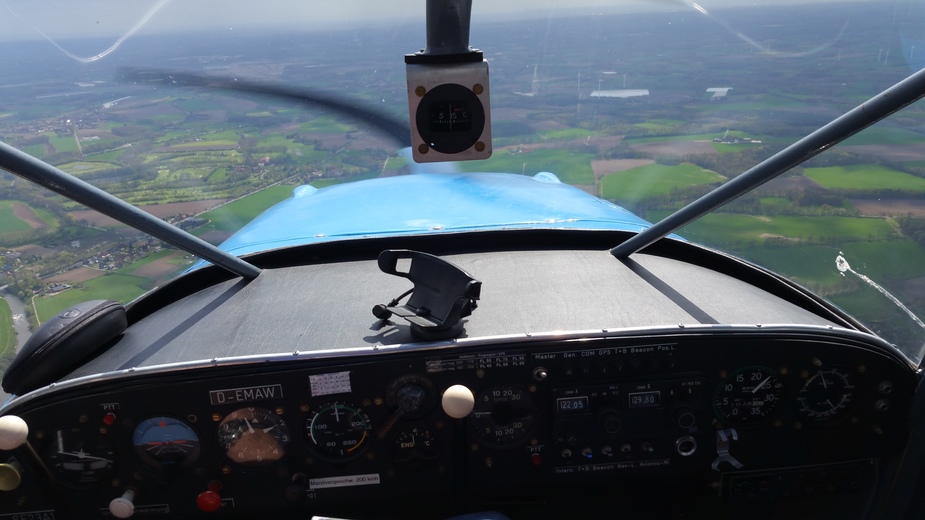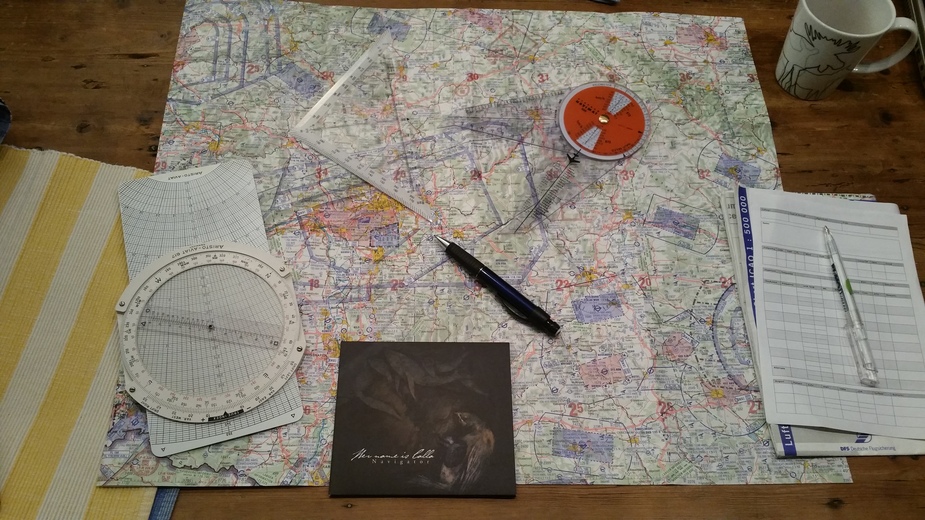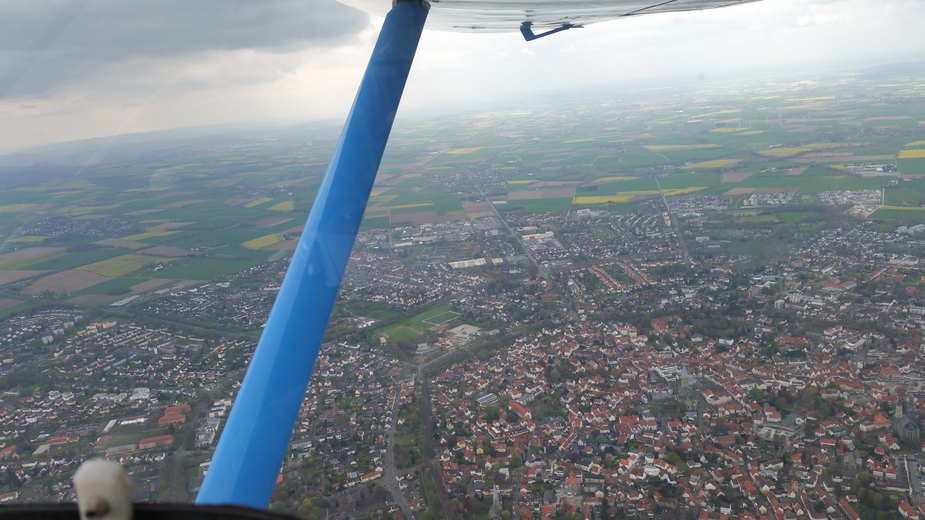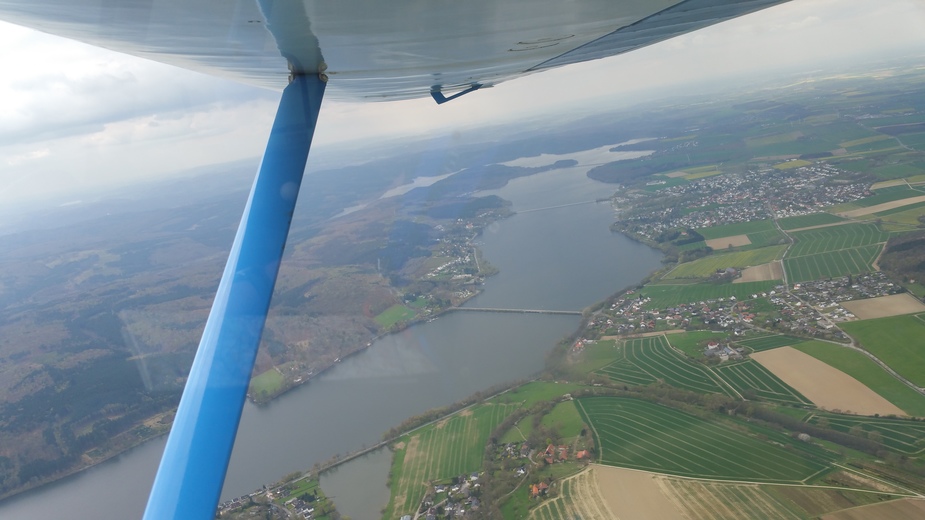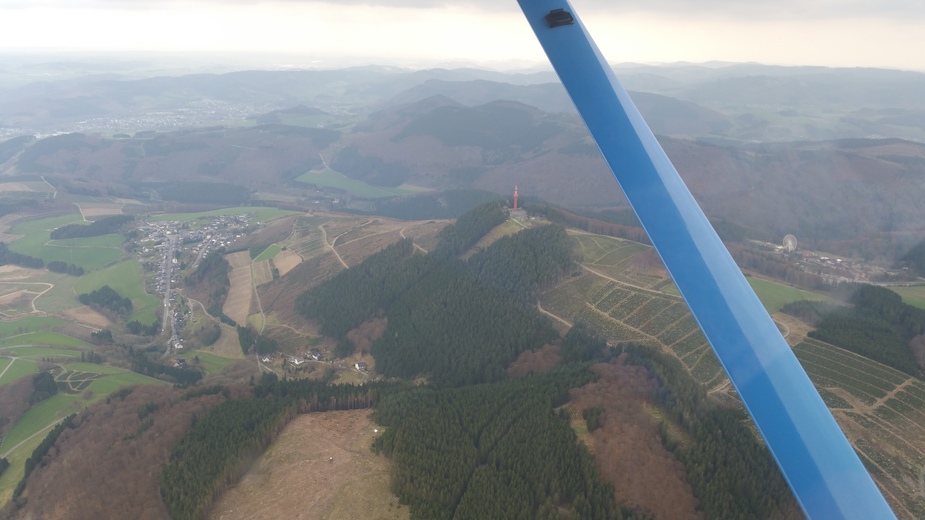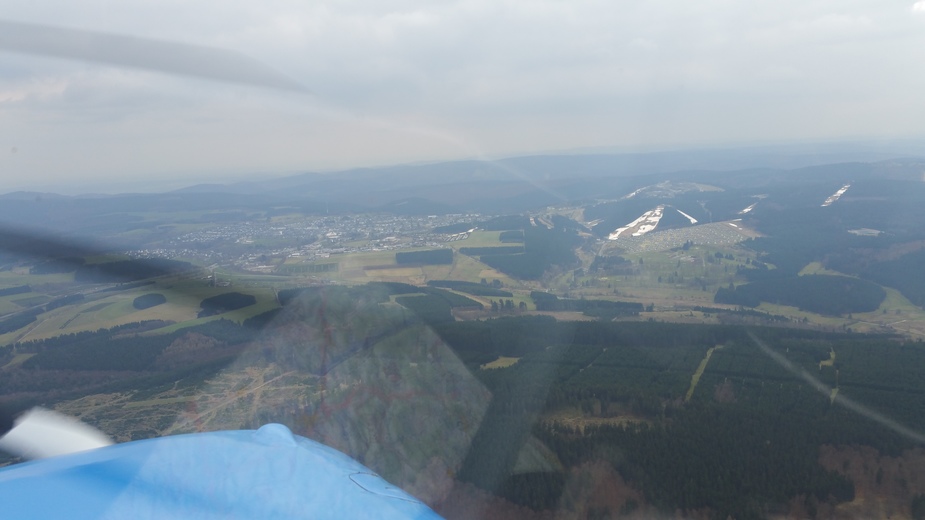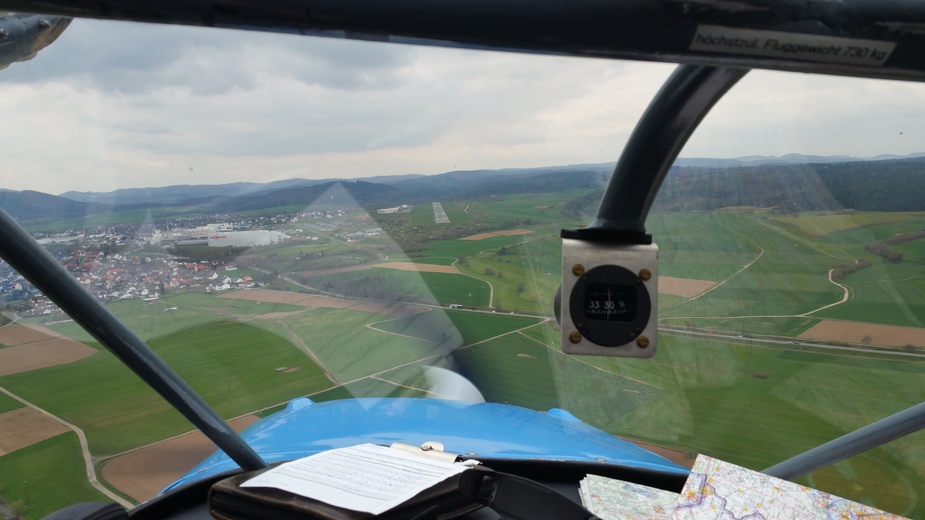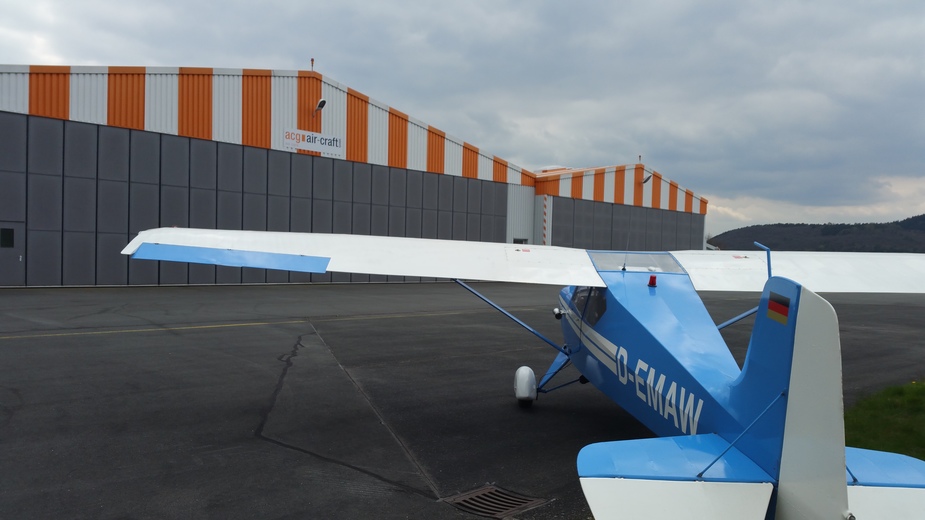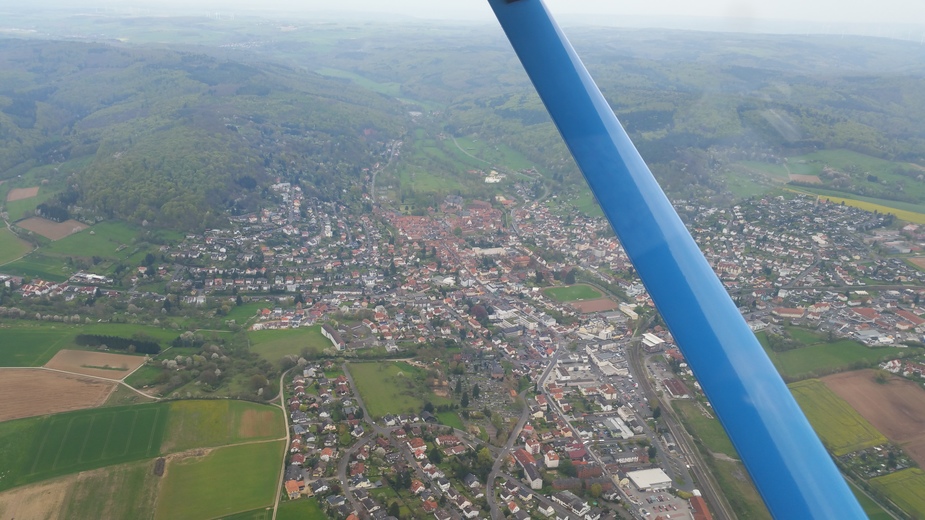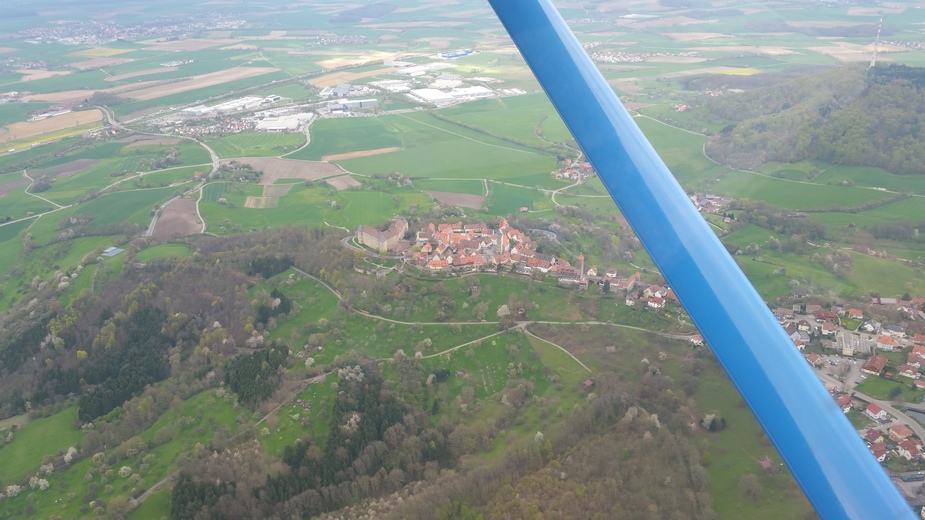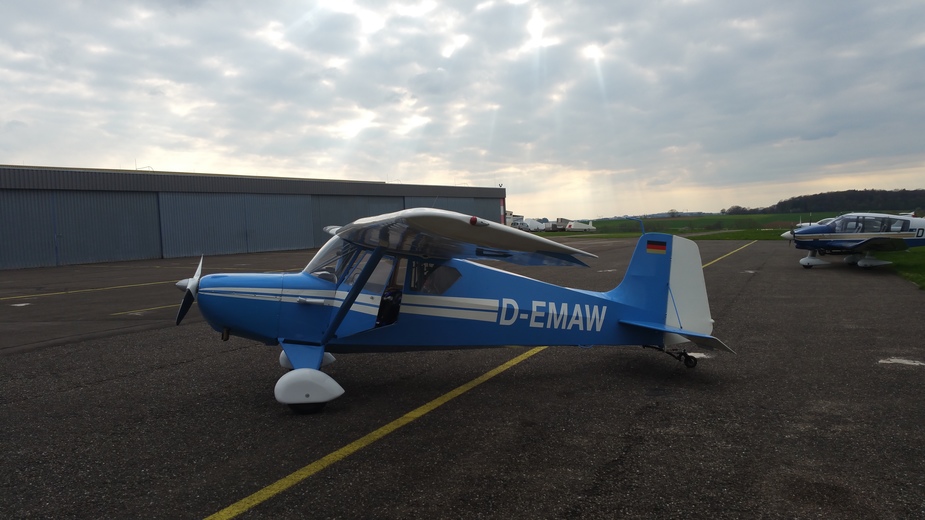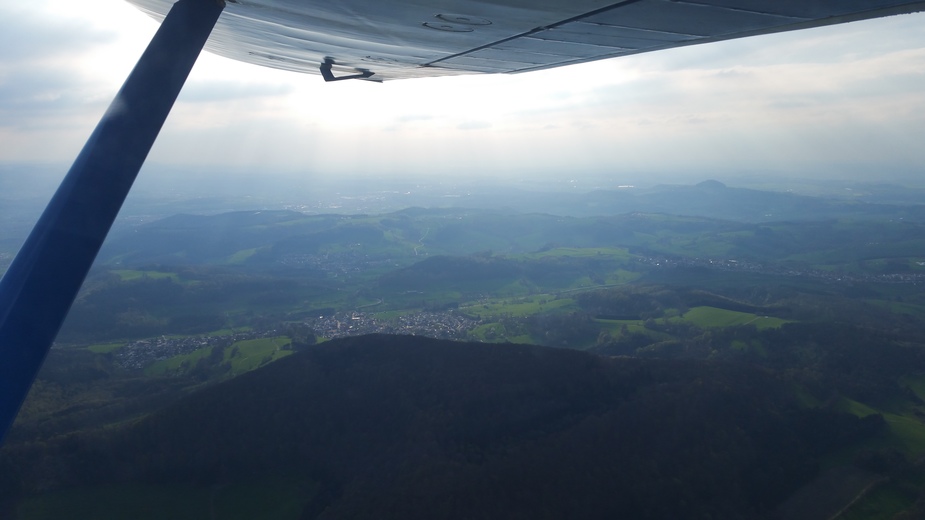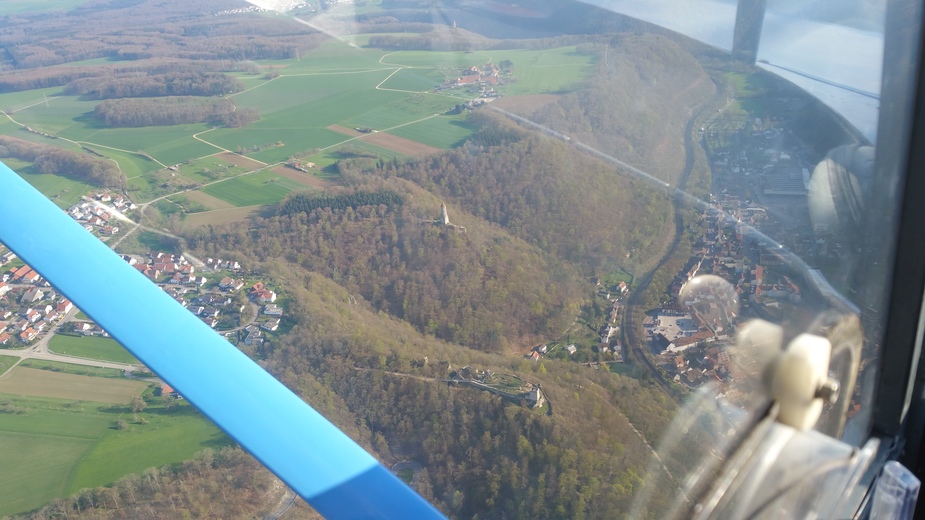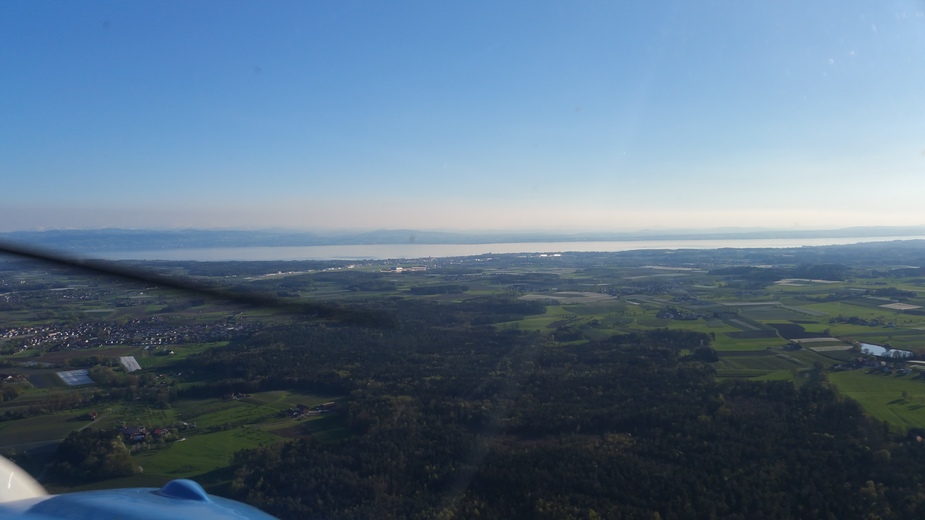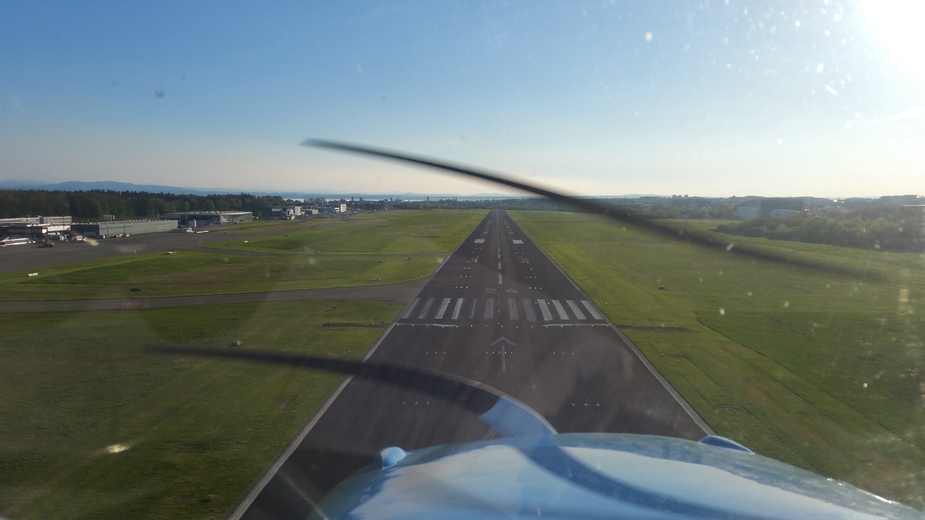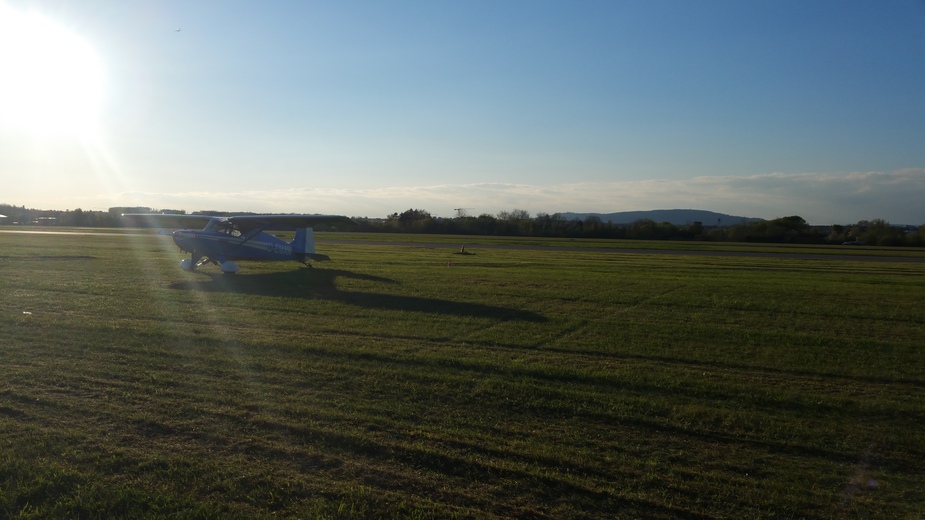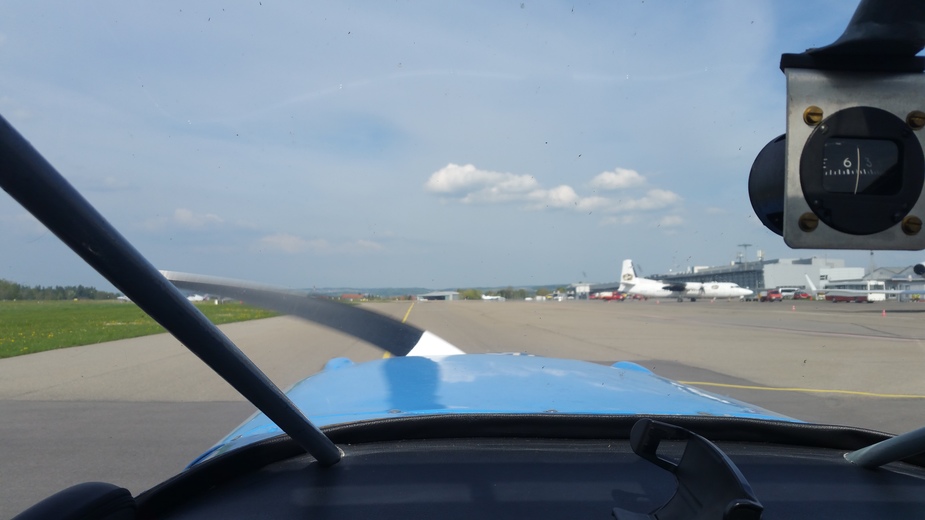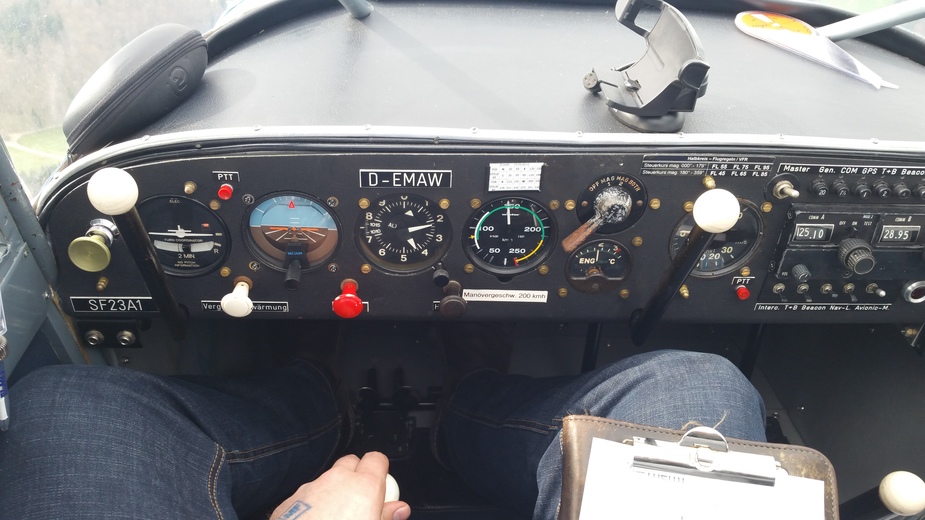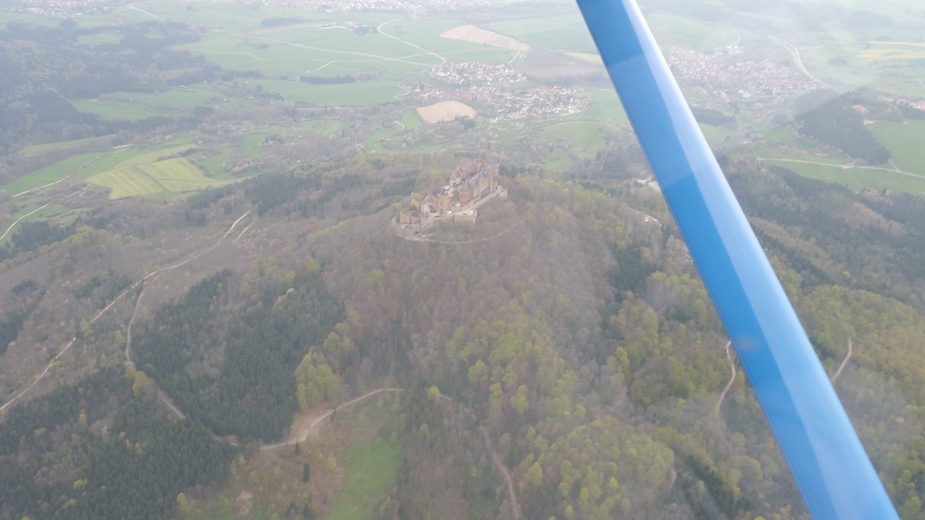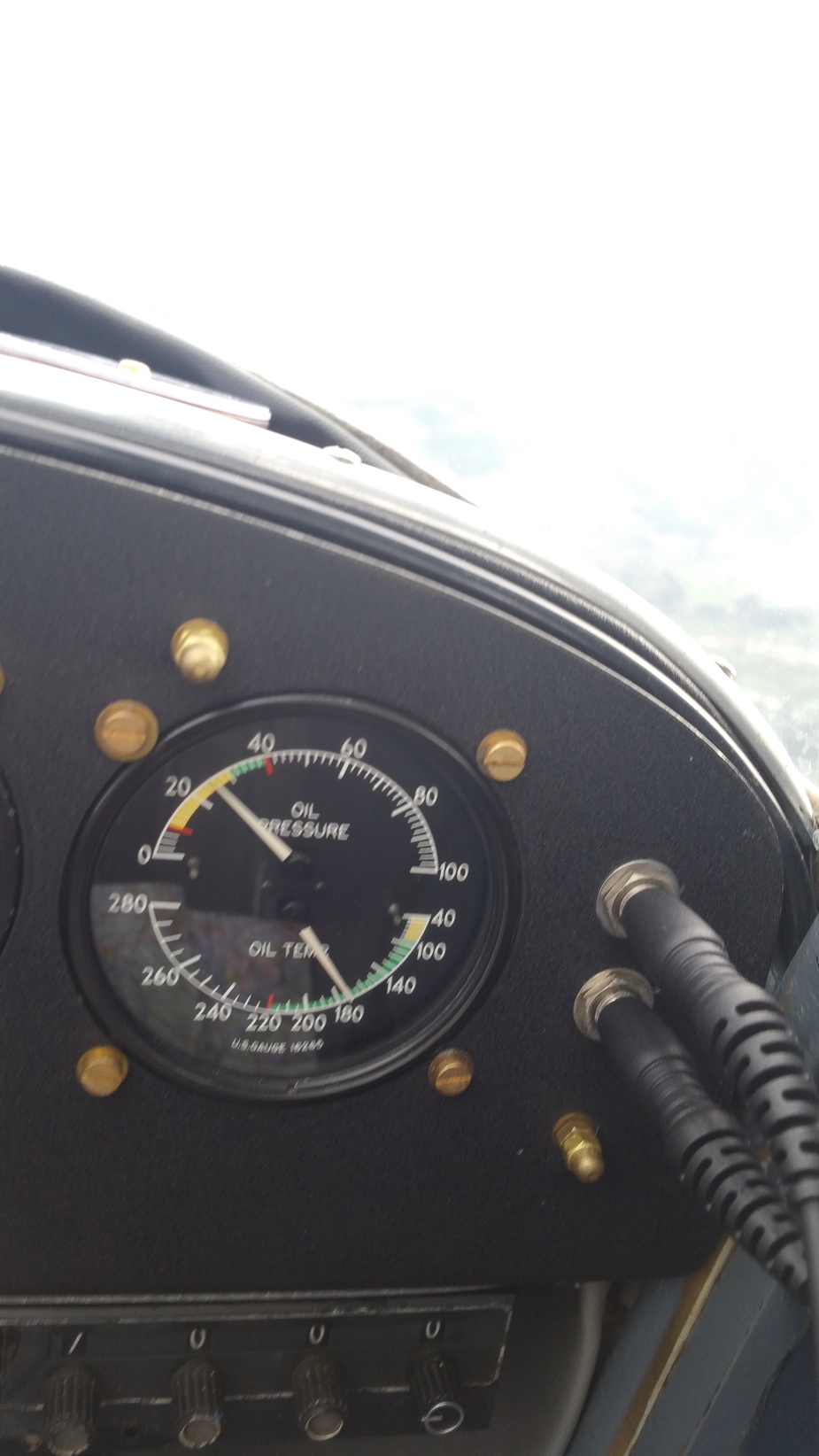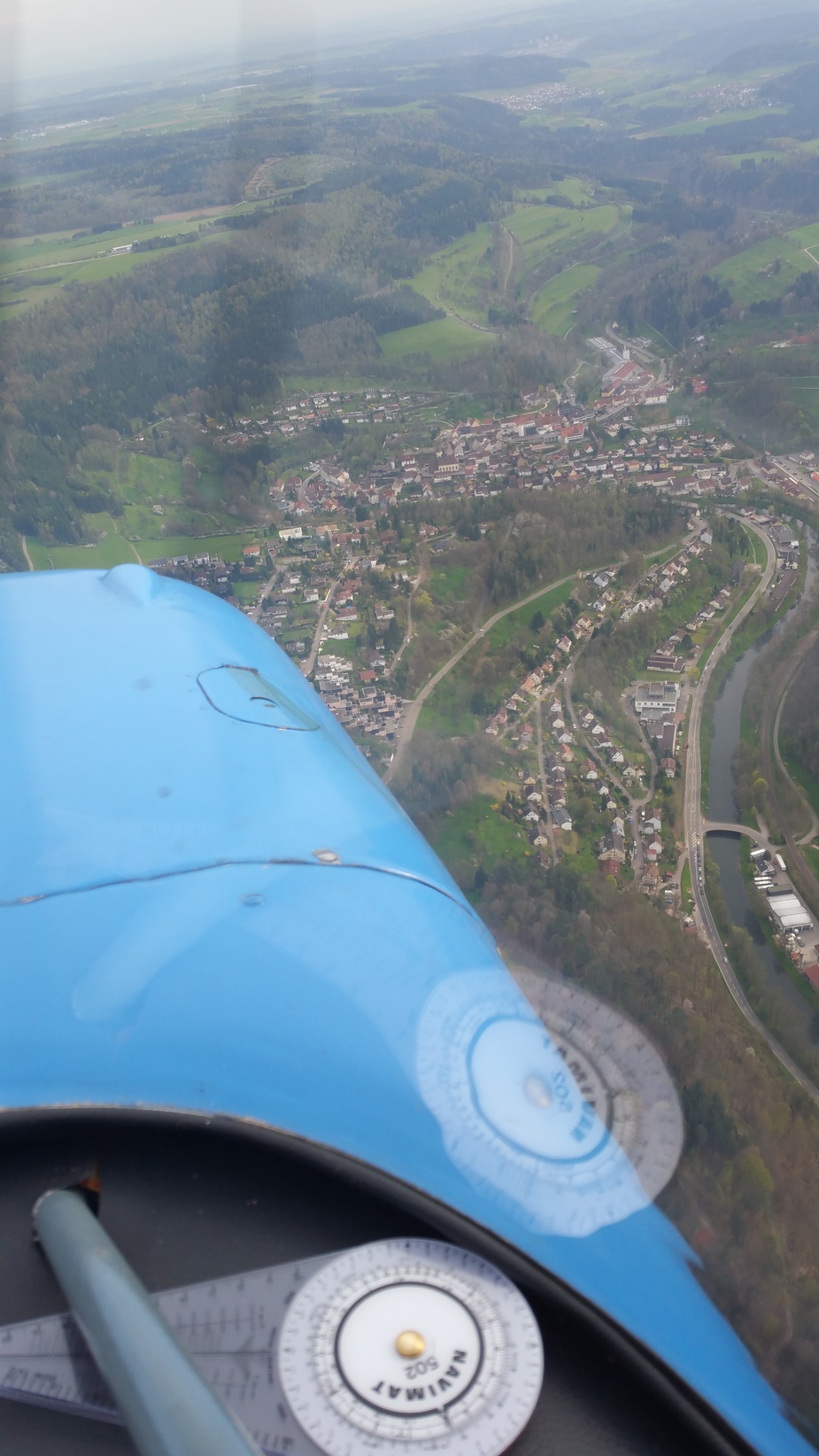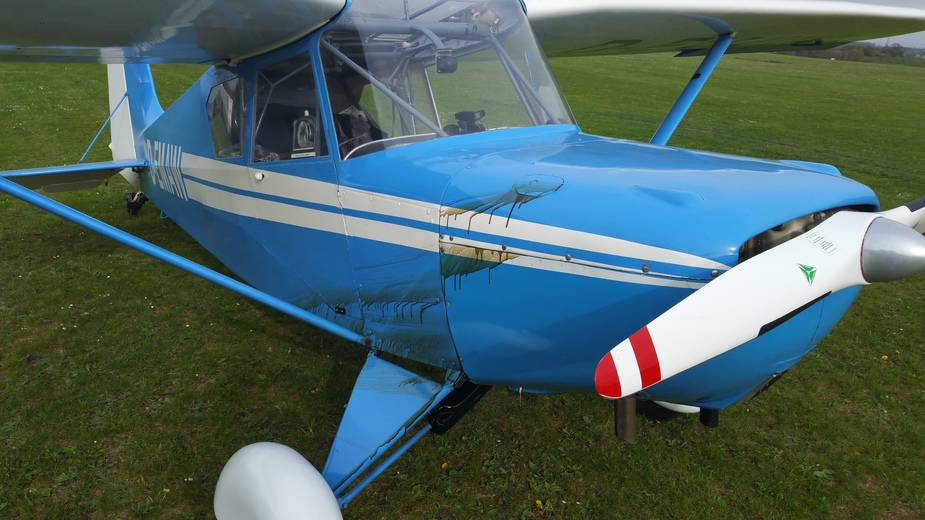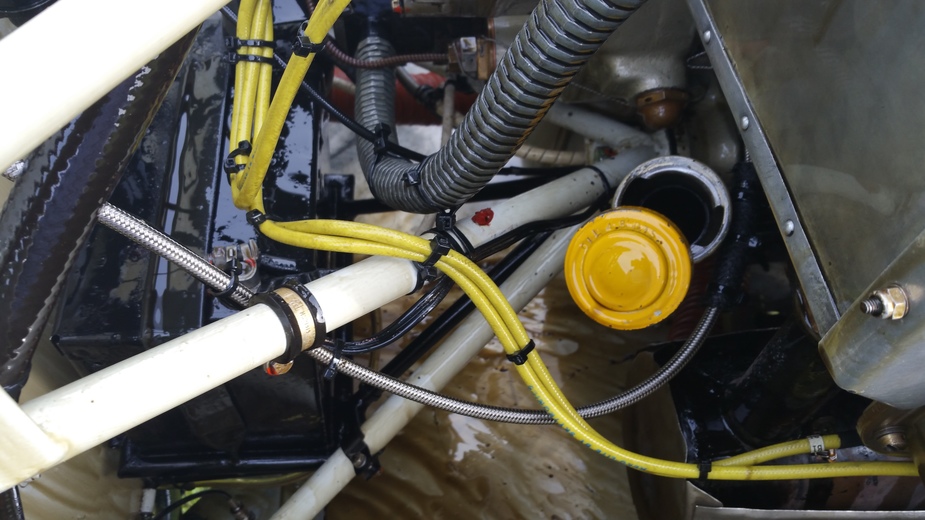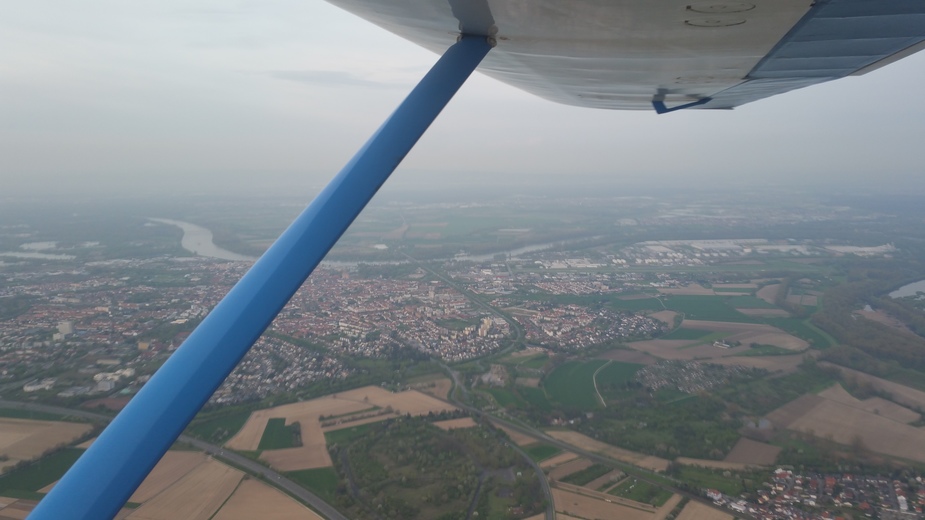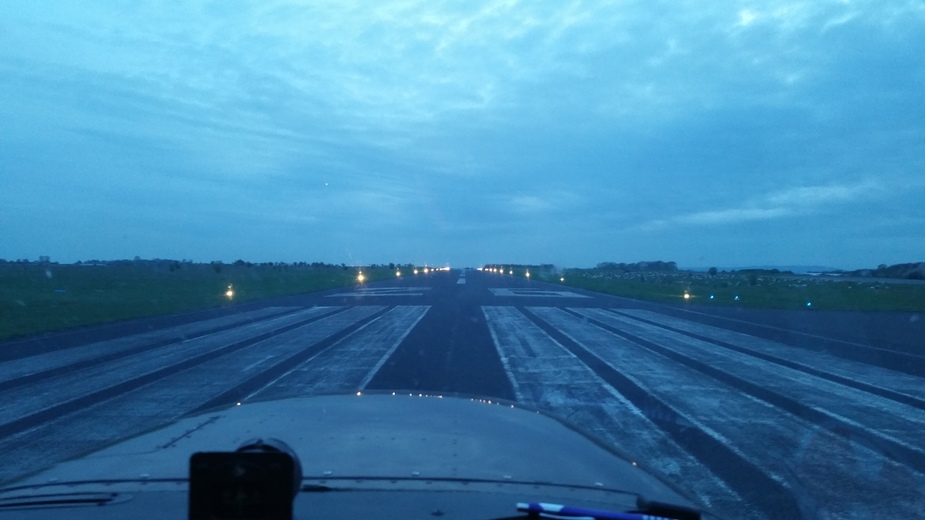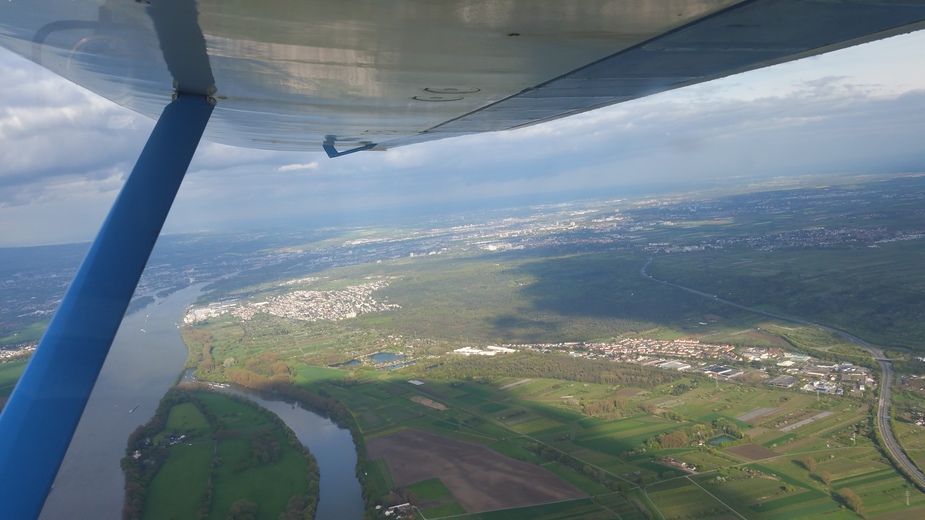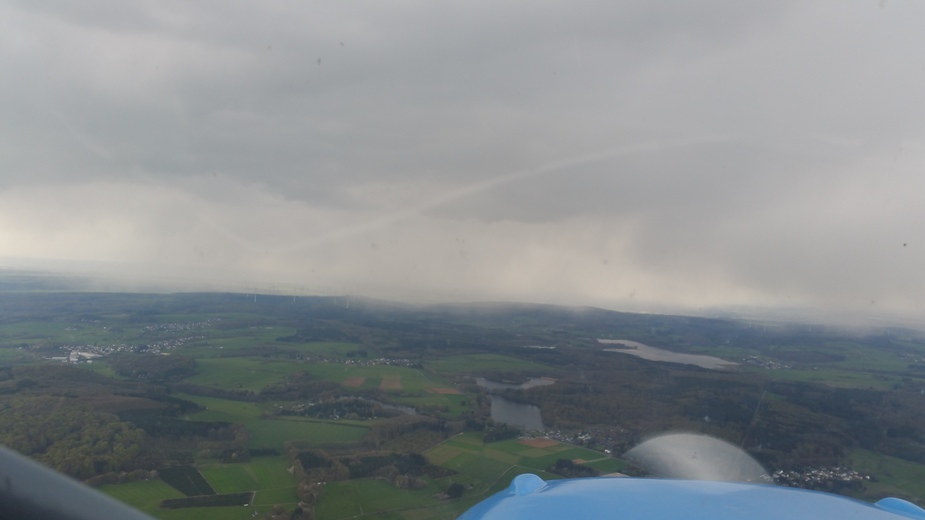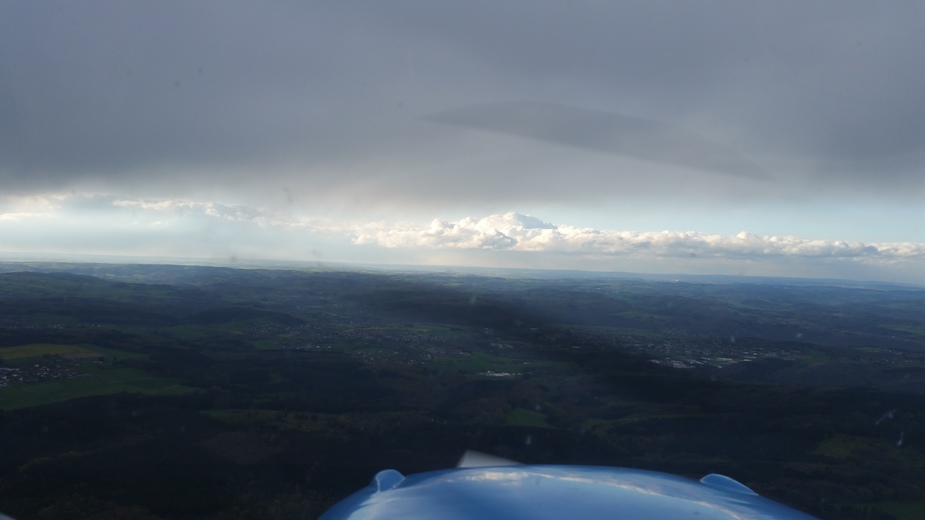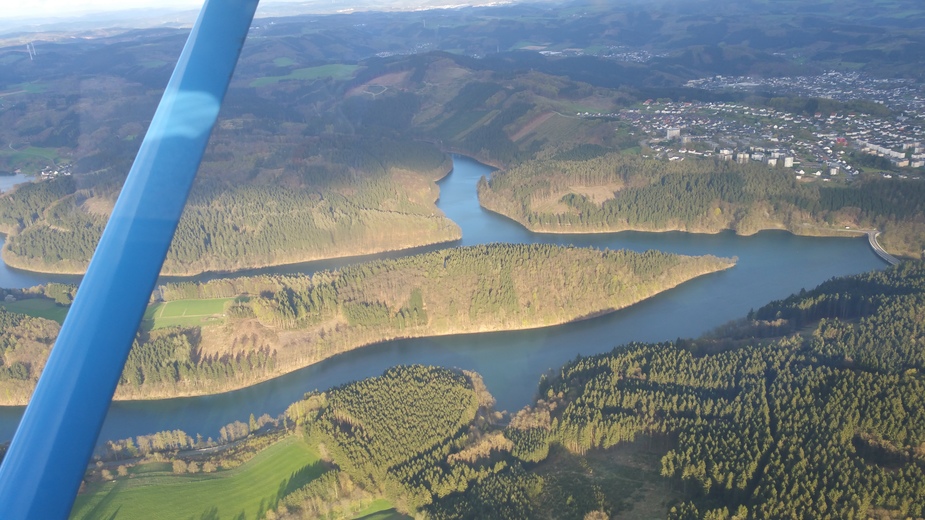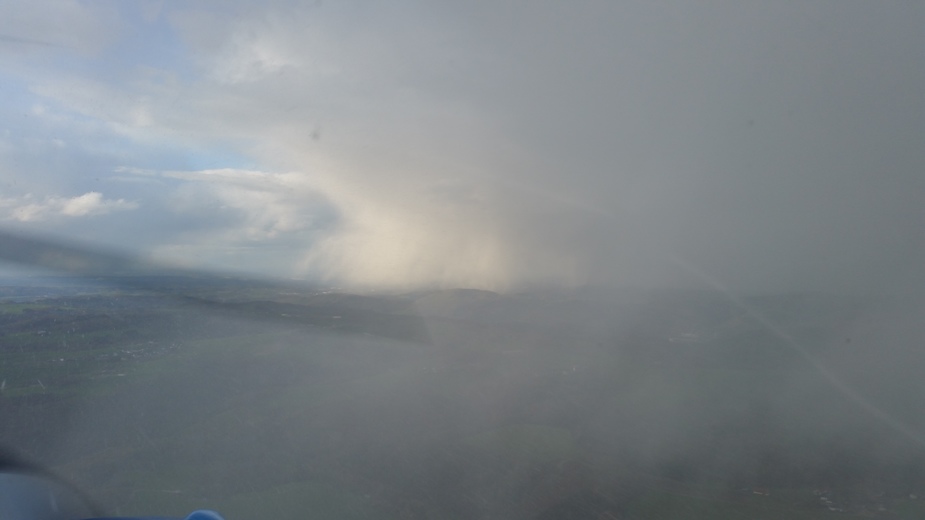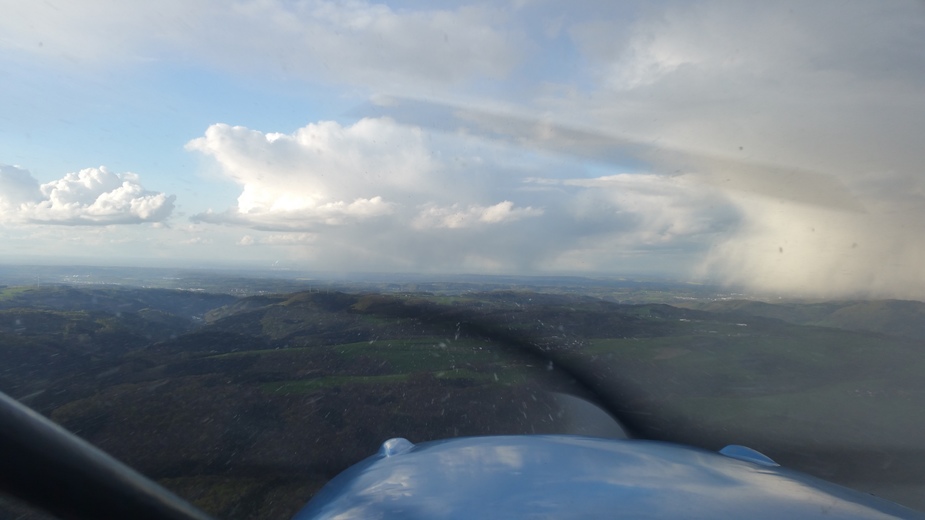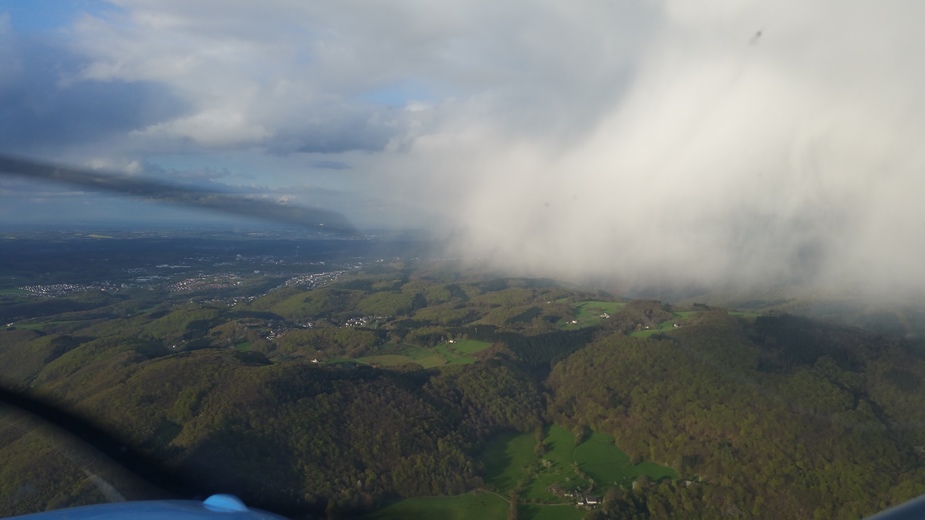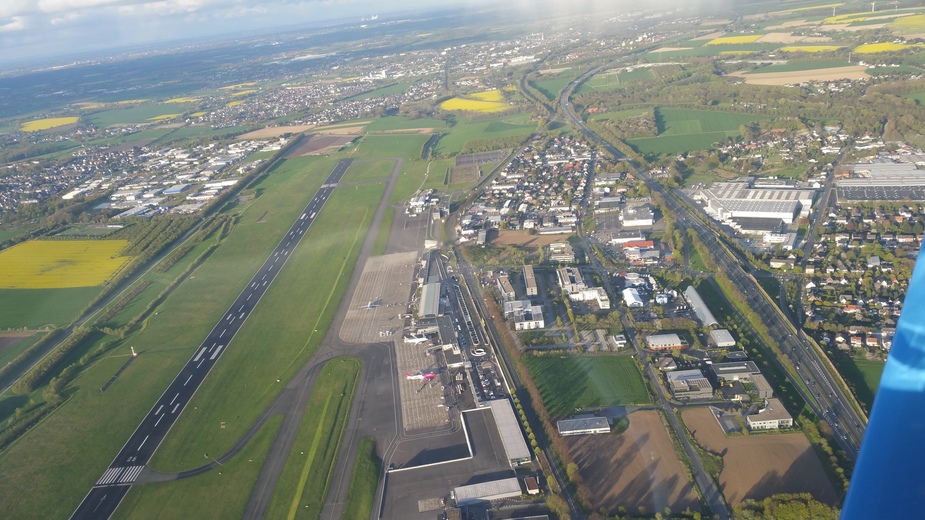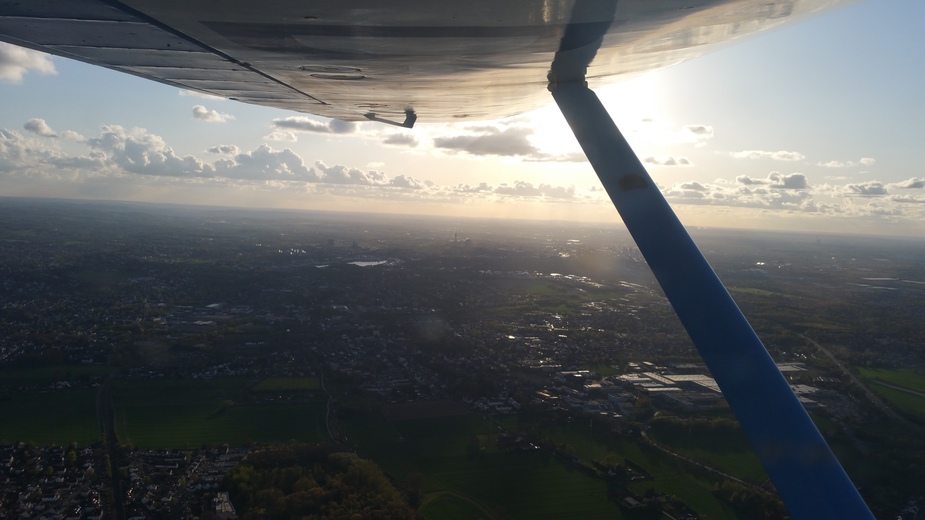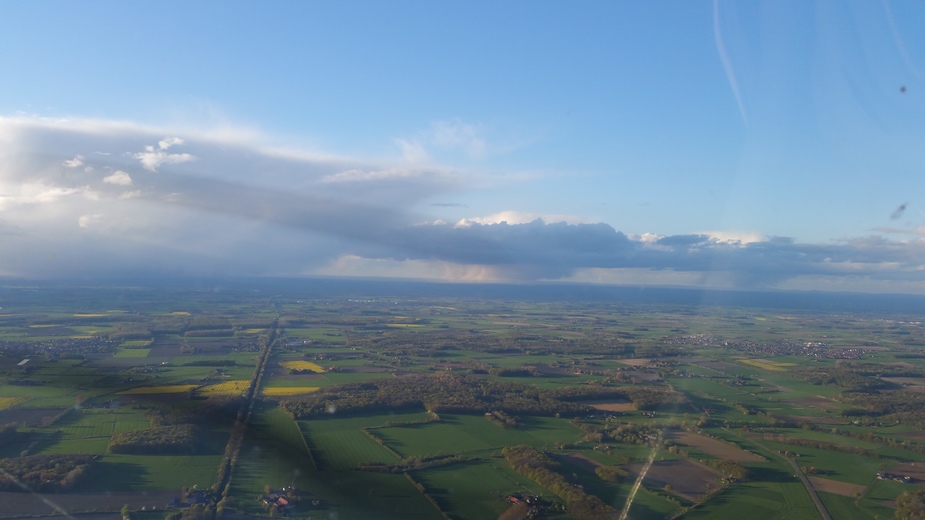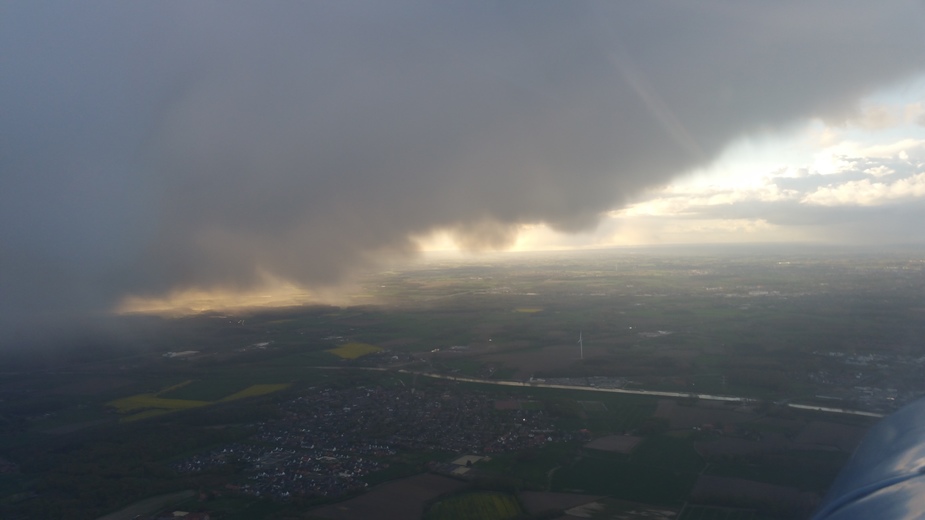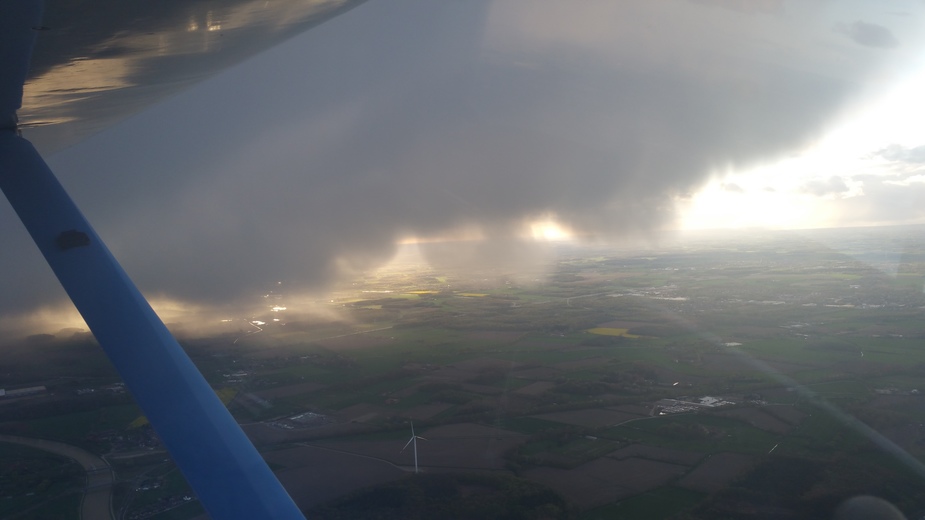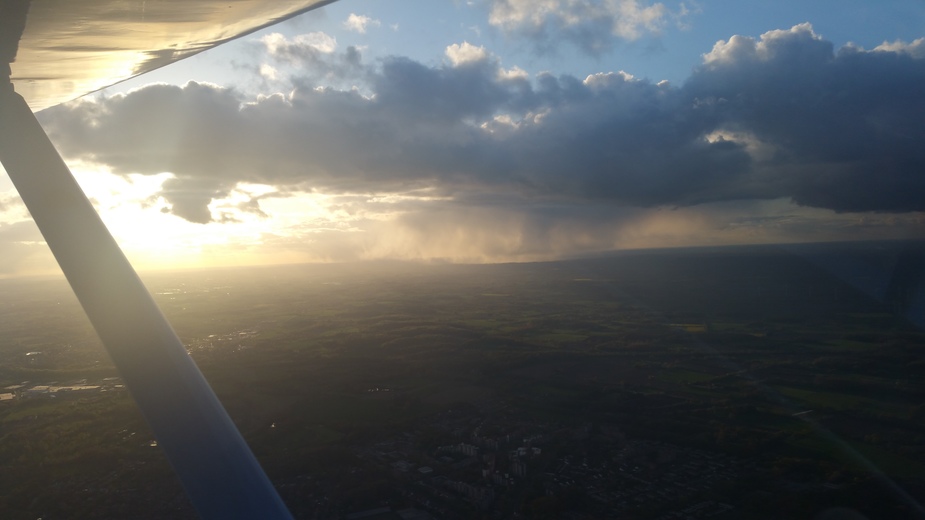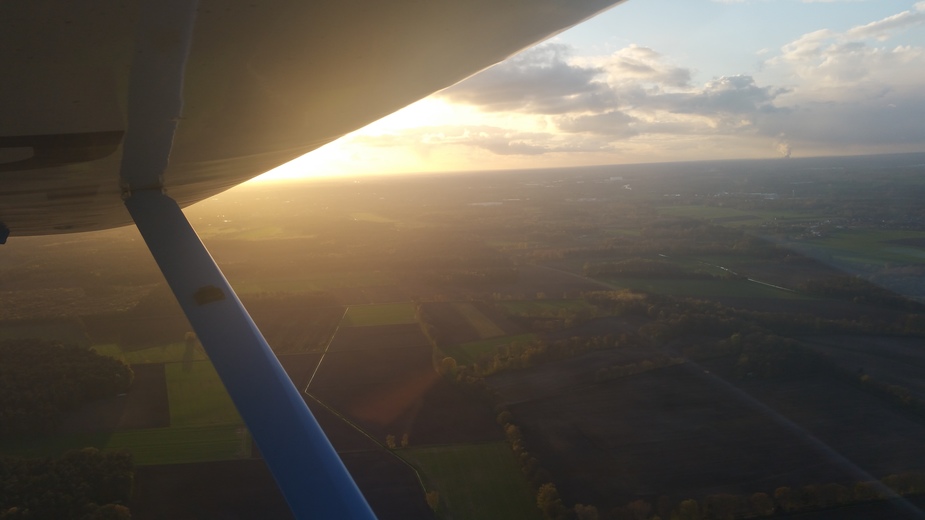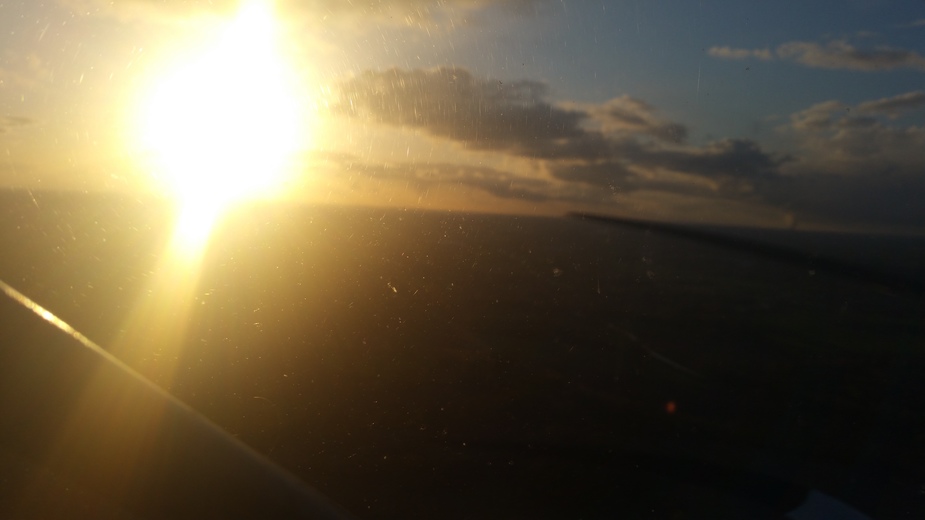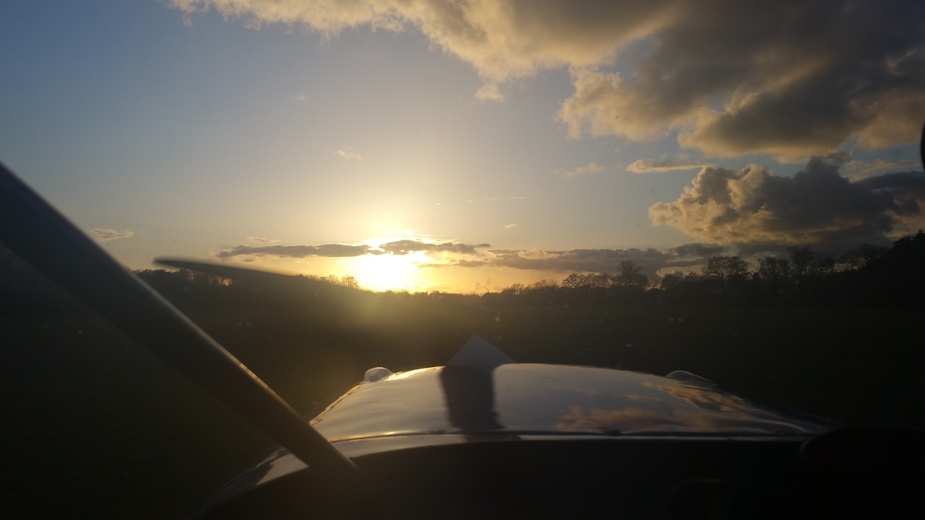 |
| MS894A |
As many general aviation aircraft series, Moranes come in very different "flavours" and engine options ranging from the 100hp MS880 to the 220 hp MS894 Minerva. You can fly them with a stick or a yoke, with fixed and constant speed props, with normal power levers and with a throttle quadrant, with a conventional gear or with a tricycle, and some finish genius has even put a Morane on floats. There are three different tank sizes, two different strut types, different brake types, electric and manual flaps, and innumerable types of lighting installations and panel setups, fuel systems, canopy mechanisms and wing tips, tow hooks, rudders and trim tabs. It seems that no two Moranes are alike and - although having performed quite a few pre-purchase inspections - I haven't met two similar aircraft even if they are called by the same model designator. For a quick overview over the naming, you might want to read the Wikipedia page. To name all varieties and differences would go way beyond the scope of this article.
At some point in history, Morane-Saulnier has built a ground attack aircraft based on the Minerva, powered by a Lycoming O-540.
 |
| Morane Guerrier. |
But there is a very dominant feature that unites all Moranes: The leading edge slats. They are automatically operated by air pressure and damped by a simple "dashpot". The slats are linked by a cable and operate simultaneously. The slats do not only control airflow over the leading edge, they add wing area to the aircraft, so that slow flight is a very natural habitat of the Morane.
 |
| MS894A with open leading edge slats |
Getting in and out of the Morane is easy through the huge sliding canopy. However, you want to be quick when it rains. With the very shallow instrument panel and a big canopy you get a great visibility out of any Morane.
 |
| View out of an MS880. You need to experience this by yourself to appreciate it. |
My family operates a MS894A Minerva with the 220 hp Franklin engine together with a friend, who also owns an MS883 with a 115 hp Lycoming O-235. I have ferried the Conti O-200 powered MS880 of a friend and our aero club used to operate an MS893A with the well known Lycoming O360. My Uncle used to own an MS892 with a 150hp O-320 and later an MS893E-D with a Lycoming O-360 and a yoke instead of a stick, so I might know a thing or two about these planes.
Flight Performance
The huge variety of different airframes and engines makes it impossible to give a unified answer to the question of the flight performance of the Moranes. I will describe some benchmark figures for the planes I have actually flown.
MS880
 |
| Small but heavy hauling: the MS880 |
The smallest Morane is powered by the well known Conti O-200. Although she has a rear bench, it is only certified for 110 kilos and so the MS880 is not a four seat aircraft, rather than what you would call a "2+2". This MS880 has a real useful load of 288 kg with two 48 liter fuel tanks. As in every O-200 powered aircraft, fuel burn is roughly in the area of 19 to 23 liters per hour, depending on required power.
 |
| MS880 in cruise |
There are versions with 85 liters capacity per side, giving up to 8 hours endurance. On my ferry flight from Flensburg to Rheine she made honest 95 KTAS at 2500 RPM in ISA-5 and roughly 80 kg under gross, so she isn't even as slow as the STOL characteristics might indicate. Ground roll on an ISA day in MSL the manual mentions about 170 Meters for a normal takeoff on concrete. That sounds about right and can be reduced with the short field takeoff method described later. Climb is not so enthusiastic and on ISA/MSL around 500 ft/min. With this the MS880 is on par with a C150 or BO208 with the same engine. In fact, I would consider the MS880 as "the better C150" in many disciplines.
MS883
 |
| MS883 take off |
The MS883 is to the MS880 what the C152 is for the C150. A slighter higher power output, a slightly heavier airframe, a slightly updated panel but the same character. Virtually all performance data is similar to the MS880. She won't cruise faster due to the heavier airframe and bigger rudder, she will be in the air a tad earlier and consume a liter more Mogas per hour. She too comes with 46 or 85 liters per wing and is capable of some astonishing endurance.
MS893A
 |
| MS893A in cruise |
MS894A
 |
| MS894A Minerva |
For further data, I have uploaded the Skydemon aircraft files for the MS880, the MS883 and the MS894A on the Skydemon Forum. Those data are book values. You might find some manuals somewhere on google, too.
Preflighting and ground handling
When you preflight a Morane, most items are pretty straight forward and do not differ much from other GA type aircraft. But there are a couple points to keep in mind.
First, you test the interlink between the slats with pulling them out or pushing them in. The slats are guided and should stay within the rollers. Like the flaps, the slats do have quite some play and that is normal for a Morane. One of my instructors used to say: "If she's not rattling, she is kaputt". Of course, there are limits to this. All the play should not allow the rollers jump out of their guides.
 |
| Moranes have a large dihedral |
The large dihedral of the Moranes make a visual check of the fuel level a bit tricky. The tanks are long and you can only actually see fuel, if they are at least half full. The long tanks with 85 or 96 liters each have two fuel capacity senders per tank and they often are not very accurate, quite like all the other GA aircraft of that era. So fuel planning can become a bit tricky in your morane and I advice never to start a day without knowing you have or had at least half the tank fuel inside.
 |
| Fuel Cap of an MS893A |
 |
| Tank cover on a Morane Wing |
 |
| Unsteerable free castor nose wheel |
During the takeoff run, usually the rudder comes alive early enough to be able to control direction. One can correct the direction in heavy winds with tipping the breaks slightly.
If you need to manoeuvre the aircraft with the tow bar, be sure no one wants to "help" and pushes mid-wing. If you need assistance getting the plane uphill backwards, you either have them push at the cowling, pull on the aerotow hook (if installed) or pull her up nose-first and turn around afterwards. Usually you can't control the aircraft when someone tries to help at the wings. When maneuvering a plane into a hangar, eyes usually are more important than muscle anyway.
 |
| Better handled alone: free castor nose wheels backwards. |
Flying the Moranes
Once you have accustomed to the individual cockpit of the Morane - as I have said, you have to search to find two similar ones - and got used to taxiing the Morane, the normal take off is similar to any other aircraft. You take off without flaps on concrete and with 8° flaps from grass for a normal take off. You lift the nose at around 70 km/h (most Moranes have metric ASIs) and let her fly off at around 95 km/h (in the MS880) or 110 km/h (MS894). If you fly a MS883 or MS880 you will find the best climb at 135 km/h with around 500 ft/min. The Minerva will deliver around 1000 ft/min at 160 km/h best climb speed. During rotation usually the slats are pulled open by the peak suction on the leading edge and when passing best angle of climb speed they will retract. Best rate of climb is flown with retracted slats. The best angle of climb is archived in the MS880 at 95 km/h and in the MS894 with 125 km/h with open slats. Especially the low powered Moranes do accustom the pilot to fly the correct speeds, but with the good working trim this is not a huge problem.
 |
| MS880B. Two Throttles, two sticks, two sets of brakes, electric flaps. |
 |
| MS894A. One throttle, two sticks, elevator and rudder trim, manual flaps. |
 |
| MS883. Note the knee positions of me (right, 196 cm) and of my wife (pilot, 170 cm) |
 |
| Open canopy of an MS894A |
Stalling a Morane is quite interesting. With the engine idle and the huge flaps set at 30° the Morane will happily mush into a "tin parachute mode" with around 500 to 700 ft/min sink speed and a forward velocity of 75 to 95 km/h depending on the model and loading. That will definitely be a survivable option to handle an engine failure at night or over an overcast.
On a power-on stall, you get around the same stall speed. This is because the Morane essentially flies on her wings and not so much on the engine.
 |
| Stall attitude of the MS894A |
 |
| Power-on stall with cruise power - and a solid 600 ft/min climb. |
 |
| MS880B showing her "barn doors" |
 |
| ASK-21 behind the Minerva |
If you operate a Morane as (occasional) tug to tow gliders, be sure to check the correct trim position prior take off. If the person who attaches the towrope to the aircraft tries to lift the elevator, he can move the trim tab into the full nose-heavy position. We have discovered this during aerotow training and we pulled on the stick with two pilots to overcome the trim forces in that moment.
Maintenance
As with many European aircraft you will need two tool sets because the airframe is metric and the engine imperial. Maintaining the engine and most of the instruments is pretty straight forward as they are industry standard.
Except perhaps for the Franklin 6A350 in the Minerva, parts are usually no problem, although Franklin is operative (again?) and had a booth on AERO2016. Our Minerva was grounded for over a year because of a fuel pump we could not locate after the old one had gotten an AD. Most of the airframe parts can be repaired with procedures in the very good repair manual or, due to all of the Moranes being ELA1 aircraft - AC-43.13. Furthermore there are many airframes being chopped and some parts can be located on the usual sites (planecheck, ebay, afors, etc.) or in the Morane-forum. Many other parts like handles, lights, fittings, come from french car manufacturers and can be found online.
The Moranes have two kinds of struts, the ERAM and the SOCATA types. for filling them with nitrogen you will need a special adapter, but other than that no special tools are required for Morane maintenance. The adjusting of the drum brakes can be a PITA, but many Moranes have disc brakes that are much easier to maintain.
 |
| Easy access to the rear instrument panel through a separate cover panel |
One additional item for maintenance are the bearings of the slats. Make sure they are allways rolling, otherwise they will wear off and you need to replace them. They need to be manufactured and it can easily be avoided. There are two "philosophies" with these rollers. I personally like to keep them dry and clean, just treated with a bit graphite. This way they don't collect as much dust. Others prefer to have them greased to keep the moisture out of the bearings. If you grease them, be sure to exchange the grease on a regular basis, especially if you are flying often to grass airfields.
All maintenance tasks described in the manual can be released to service within the scope of pilot/owner maintenance.
Prepurchase on a Morane
If you are looking at a Morane to buy, you will get much aircraft for your money. Almost all comparatively powered aircraft are much more expensive and some of them are not even close to the handling qualities and visibility you get when flying a Morane. Sure, it lacks ramp appeal for the most parts, but I have yet to meet one to fly a Morane and not like the aircraft. I think it is a well kept open secret in aviation, if you get my drift. There usually are two problems with well kept secrets. One is the difficulties you may face when you want to sell the plane. So if you are looking for an intermediate aircraft, a Morane is probably not for you.
The other problem with well kept secrets is, that you need to take a close look at the airframe at hand. The monetary difference between a worthless corroded piece of beautiful formed metal and a nice aircraft is very small. A good MS880 goes for 7 to 10 k€, in mint condition I wouldn't pay more than 15k€. But often you get an offer for something rotten only 1000 or 2000 € below. Some Moranes, especially MS893 and some MS894 have lived a life in aero towing and have a considerable amount of takeoffs and landings. I have seen MS893s change hands for under 10000€, but for a reasonable conditioned MS893 you will pay something between 15000 and 20000€, depending on times and condition.
I assume you will be looking at the engine, avionics, interior, paperwork and general appearance like you would do on any other plane, too. Then there are some typical items to look for in a Morane.
The first thing is the engine mount. Some Moranes have steel tubings, but certain aircraft have a riveted engine mount and nose gear struts. Those tend to develop cracks around the rivets and on some models I have seen signs of bearing of the rivet holes.
Moranes have the reputation to be prone to corrosion, but that is not entirely true. There are many airframes treated with zinc-chromate, but not all of them. In General Moranes are not better or worse than other treated or untreated airframes. Still:
In the cabin, remove the side panels on the rear bench and take a closer look at the main spar carry through. We have found some corrosion on some models in that area. You need to remove the back of the rear bench. This is done with 8 normal screws. It gives you acess to the back fuselage. The "keel" is, of course, a known item prone to corrosion. You further would want to check the bell cranks of the aileron control. They are located directly behind the upper rear bench, outboard. They are often neglected during maintenance.
You can take off the rear fairing with a couple of screws and check the rear fuselage for corrosion and bucklings. Moranes can be landed tail first and this can be seen at the rear fuselage skin. Check the travel of the elevator with the stick. I have seen Moranes under offer where you could move the stick full fore and full aft without even moving the elevator. Especially if the aircraft has lived outdoors, this is important.
You will need a 10mm wrench (for most of the Moranes) to take off the wing tip fairings. You definitely want to look inside, because the spar caps can be corroded and that will not be tolerable (see picture).
 |
| Corroded main spar caps of an MS893A |
On the ailerons you can see two stops for the down position of each aileron. They need to touch the aileron with the same angle of deflection, so that both stops are active. If not, this may indicate a misrigged aircraft. Of course, the aileron must not contact the hinges in the "up" position.
 |
| Aileron stops |
 |
| Slightly bent main landing gear of an MS893 |
Hard landings can - and that is no suprise - bend the trailing link of the main landing gear. This should be inspected prior purchasing the Morane.
Conclusion
All in all I think the Morane is a widely underestimated aircraft. It delivers much aircraft for the money and are a real alternative to the wide spread Cessnas and Pipers. They offer great visibility and very nice and direct handling and are cheap to operate. They are not fast, you need to sit down before you buy (one size fit's all on many models) and they somewhat lack ramp appeal for the most pilots. So it is a plane easy to buy and hard to sell, but you should seek the opportunity to fly one, at least for once.
 |
| MS894A |
